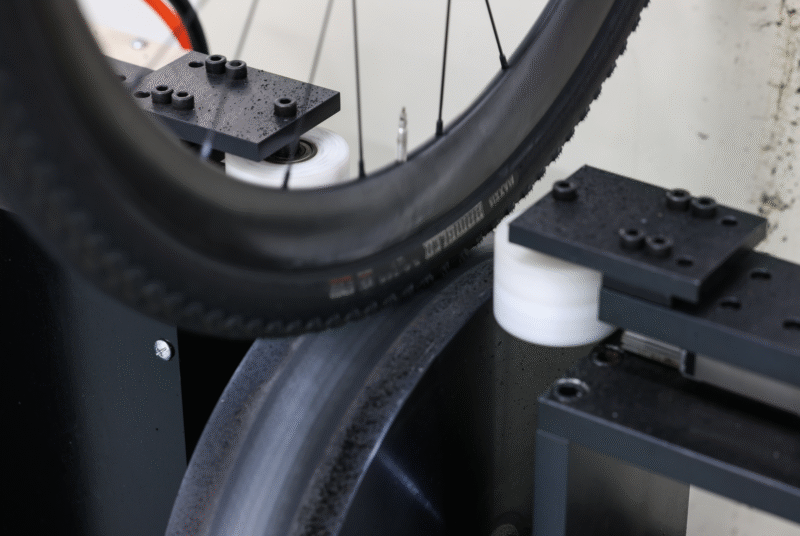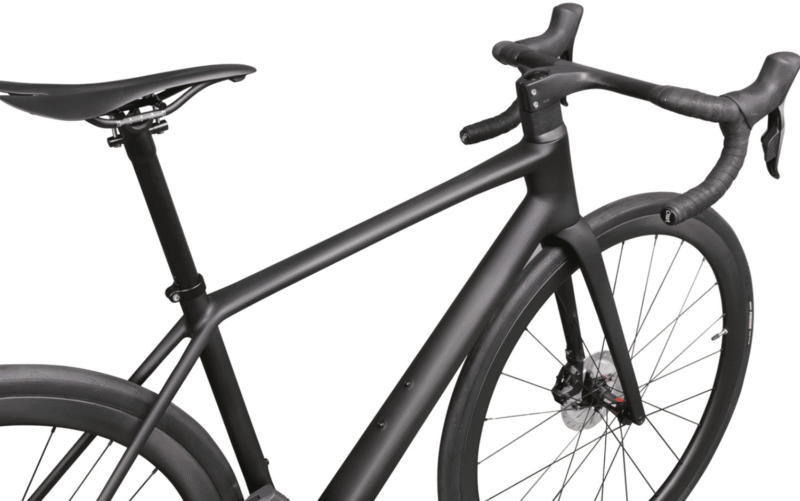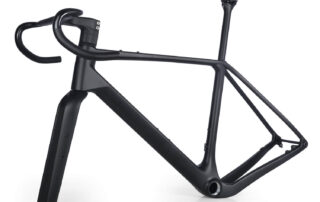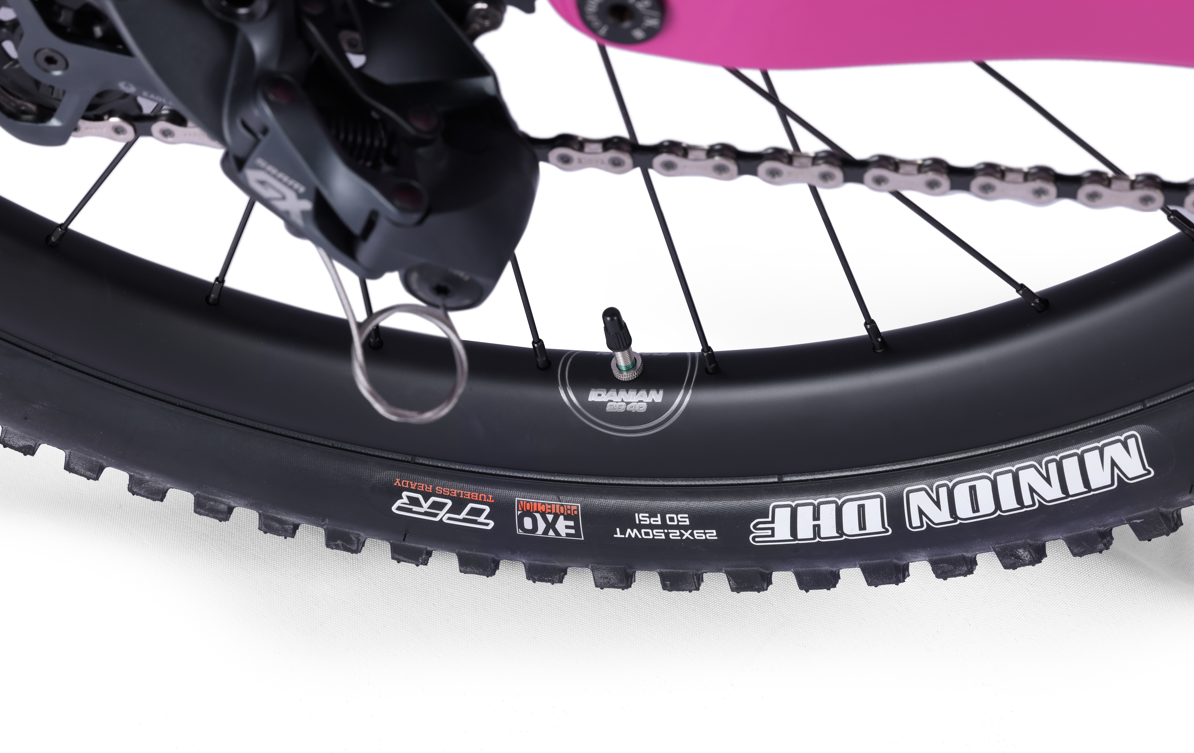What is rolling resistance? A comparison of rolling resistance between clincher tires, tubeless tires, and tubular tires.
What is rolling resistance? A comparison of rolling resistance between clincher tires, tubeless tires, and tubular tires.
What is Rolling Resistance?
Rolling resistance is a critical force cyclists must overcome while riding. When climbing hills, you counter gravity, gaining potential energy that you can utilize on descents. A 2020 study by Malizia and Blocken in the Journal of Wind Engineering and Industrial Aerodynamics on bicycle aerodynamics notes that at speeds above 40 km/h on flat terrain, approximately 90% of the resistance is due to air drag, explaining road cyclists’ obsession with aerodynamics. Beyond air resistance, the friction between tires and the road—known as rolling resistance—is a primary force you must overcome to start and maintain speed.
Rolling resistance, according to tire manufacturer Schwalbe, is the energy lost as a tire rolls. This loss stems from multiple sources, with the primary one being energy dissipated due to tire deformation. Friction between the tire and road surface also plays a role, making riding on smooth asphalt easier than on gravel or off-road terrain. Tire deformation or relative displacement generates heat and sound, further contributing to energy loss. Factors like tire width, diameter, and pressure affect deformation, while tire flexibility and rubber compound ratios also matter. Replacing some carbon black in tire compounds with silica reduces energy loss from displacement, a reason high-performance tires often include silica. Graphene, added by Vittoria in its premium tires, is claimed to have a similar effect.
For time trials or races, you might sacrifice tire durability and puncture protection for speed, using thinner casings and sidewalls without puncture layers. Conversely, if you ride rough roads or dislike roadside repairs, you might accept higher rolling resistance for added puncture protection, grip, and longevity.
What is Rolling Resistance?

Rolling resistance is one of the most noticeable forces slowing you down and one of the easiest to address. Besides air drag, it constitutes a significant portion of the resistance you encounter, often exceeding air resistance at lower speeds. Nearly every cyclist aims to ride faster, farther, or with less effort, and reducing rolling resistance is a simple, cost-effective way to achieve this. As Schwalbe notes, “Cyclists have very limited physical energy, and they want to use it as efficiently as possible.” Switching to low-rolling-resistance tires is relatively inexpensive and can optimize your current riding conditions and routes.
How is Rolling Resistance Tested?
Tires are mounted on a test wheel and inflated to a predetermined pressure. They contact a test drum, with pressure applied from above to simulate a rider’s weight, causing tire deformation. The system measures the excess power or torque needed to maintain a specified speed, determining rolling resistance. Multiple repetitions ensure accuracy and repeatability, often preceded by a warm-up period to balance the system and tires. Bicycle tire rolling resistance is typically expressed in watts (W), a familiar unit for riders and enthusiasts, though the rolling resistance coefficient (Crr)—the force required to overcome resistance divided by wheel load, often in N/kg—is also used.
Comparing Open, Clincher, and Tubular Tires
One factor influencing rolling resistance is friction between the inner tube and outer tire, which occurs during deformation under load. A test evaluated the impact of 10 different TPU, latex, and butyl inner tubes paired with a 25mm Continental GP5000 STR outer tire, also comparing them to tubeless setups. Results showed inner tubes increased rolling resistance by 0.2–3.8W compared to tubeless. Latex inner tubes had the least impact, while most TPU inner tubes outperformed butyl. The conclusion favored tubeless tires for maximum efficiency; for inner tubes, the non-tubeless GP5000 clincher version was faster, lighter, and cheaper. Tubular tires, similar to clinchers but pricier, may match clinchers with latex inner tubes in rolling resistance.
Cotton casing tires can also reduce rolling resistance, though glue type, quantity, and drying time affect results, making definitive conclusions from comparisons challenging. Generally, the rolling resistance difference between tubeless and latex or TPU inner tubes is minimal, allowing choice based on preference. Tubeless tires offer added puncture protection, and sealant can enable riding home after a puncture in most cases.
How Does Rolling Resistance Vary with Tire Width?
A comparison test of two Pirelli P Zero Race TLR versions (26mm and 30mm) assessed whether wider tires are faster. Results depend on conditions. On indoor rollers, at the same pressure, the 30mm tire required less power to maintain speed due to reduced deformation from a wider, shorter contact patch. At equal pressure adjusted for width, the narrower tire was more efficient. Theoretically, perfect pressure adjustment to maintain identical contact areas would yield equal rolling resistance. In real-world riding, wider tires aren’t slower on good roads and outperform narrower tires on rough terrain, offering better compliance and grip—why elite gravel racers choose ultra-wide tires for events like Unbound. Tire size should align with terrain and riding goals.
Is Rolling Resistance Important for Mountain Bikes and Gravel Bikes?

The short answer is yes, but less so than for road bikes. For many mountain and gravel riders, rolling resistance isn’t the top priority. Lighter, thinner, lower-resistance tires may puncture more easily, a compromise unworthy for endurance races or challenging trails. Mountain bikers might sacrifice grip for lower rolling resistance in XC racing, where speed matters on less demanding courses, and the same applies to gravel. For most off-road riding, grip and puncture protection outweigh low rolling resistance.
How Repeatable Are Rolling Resistance Test Results?
Rolling resistance differences between most tested tires are small, and other factors—such as tire pressure, rim inner width, and your combined weight with the bike—can affect efficiency. Tests controlled variables with 80psi latex inner tubes, but this pressure was too high for some setups, like the Zipp 454 NSW hookless rim (max 72.5psi/5 BAR, 23mm inner width) versus the Hunt 54 Aerodynamicist Carbon Disc (20mm inner width), both altering rolling resistance. In the automotive sector, ISO standards unify rolling resistance testing, but bicycle tests depend on the tester. Experienced testers provide the most comprehensive, consistent methods. Ultimately, rolling resistance involves trade-offs with air drag, durability, and grip, requiring balanced decisions on tire choice, conditions, and pressure.







